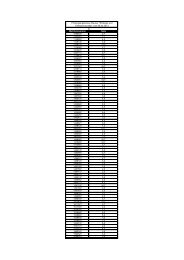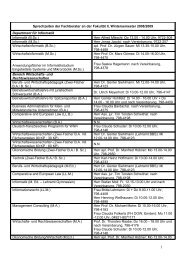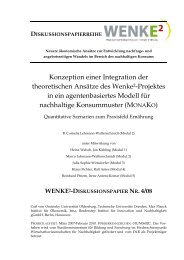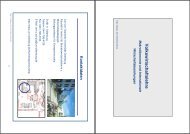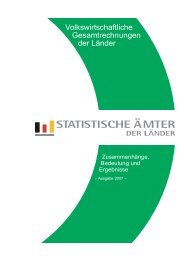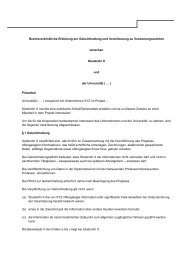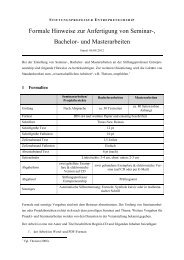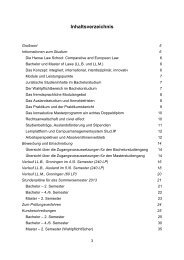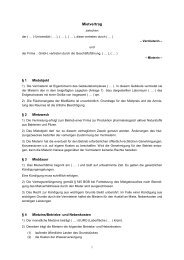Pro-Environmental Behavior and Rational Consumer Choice
Pro-Environmental Behavior and Rational Consumer Choice
Pro-Environmental Behavior and Rational Consumer Choice
You also want an ePaper? Increase the reach of your titles
YUMPU automatically turns print PDFs into web optimized ePapers that Google loves.
<strong>Pro</strong>-<strong>Environmental</strong> <strong>Behavior</strong> <strong>and</strong> <strong>Rational</strong> <strong>Consumer</strong> <strong>Choice</strong> 12<br />
(b), the derivative taken at the observed choice<br />
o<br />
q allows us to assess whether or not<br />
o<br />
o<br />
( q , X ( y,<br />
q ) ) is utility-maximizing <strong>and</strong>, if not, in which direction the distortion goes.<br />
o<br />
o<br />
o o<br />
Specifically, any choice ( q , X ( y,<br />
q ) ) for which V ( y,<br />
q , q + q,<br />
θ ) > ( < ) 0 , can be<br />
improved upon by raising (reducing) q <strong>and</strong> reducing (raising) x.<br />
To shed some light on possible sources of distorted choice, we consider the decision utility<br />
~<br />
function U ( x,<br />
q,<br />
Q,<br />
θ ) , which is assumed to have the same qualitative properties as the<br />
experienced utility function stated in (1). In addition, we admit that decisions are based on<br />
~<br />
a perceived unit cost function P ( q)<br />
which is assumed to have the same qualitative<br />
~ ~<br />
properties as the true cost function, as stated in (2), <strong>and</strong> which induces X ( y,<br />
q)<br />
: = y / P(<br />
q)<br />
.<br />
~<br />
~ ~<br />
We then have the semi-reduced decision utility function V ( y,<br />
q,<br />
Q,<br />
θ ) = U ( X ( y,<br />
q),<br />
q,<br />
Q,<br />
θ ) .<br />
o<br />
By definition, observed choice q maximizes decision utility. Observed choice is<br />
~ o o<br />
*<br />
characterized by Vq<br />
( y,<br />
q , q + q,<br />
θ ) = 0 . Due to <strong>Pro</strong>position 1, any deviation q ( ) q<br />
o<br />
< ><br />
o o<br />
~ o o<br />
therefore implies V ( y,<br />
q , q + q,<br />
θ ) > ( < ) 0 = V ( y,<br />
q , q + q,<br />
θ ) or, in more detail,<br />
U<br />
o<br />
x<br />
X<br />
o<br />
q<br />
o<br />
q<br />
q<br />
o<br />
Q<br />
o<br />
x<br />
o<br />
q<br />
o<br />
q<br />
q<br />
~ ~ ~ ~<br />
+ U + U > ( < ) 0 = U X + U + U<br />
(3)<br />
where the superscript ‘o’ indicates that the derivatives are evaluated at the observed choice.<br />
*<br />
For the sake of concreteness, consider the case q q<br />
o o ~ o<br />
< , implying V q > Vq<br />
( = 0)<br />
. We see<br />
o ~ o<br />
from (3) that the latter inequality arises if at least one of the following holds: (a) U x < U x ,<br />
o ~ o o ~ o<br />
o ~ o<br />
o ~ o<br />
(b) X > X ⇔ P < P , (c) U > U , (d) U > U . Here, (a) reflects that the marginal<br />
q<br />
q<br />
q<br />
q<br />
q<br />
q<br />
utility from quantity is over-rated ex ante, whereas (b) reflects that the perceived<br />
(expected) marginal cost from quality is over-rated. 13 (c) <strong>and</strong> (d) reflect an ex ante underrating<br />
of the marginal utility from quality. (a) – (d) are possible sources of a downward<br />
distortion in q o .<br />
In view of the literature discussed above, a slightly more specific version of the<br />
experienced <strong>and</strong> decision utility functions would focus on materialism, i.e., the weight an<br />
individual attaches to quantity relative to quality. Let this weight be ω > 0 , such that the<br />
~<br />
experienced <strong>and</strong> decision utility functions are U ( ω x,<br />
q,<br />
Q,<br />
θ ) <strong>and</strong> U ( ω x,<br />
q,<br />
Q,<br />
θ ) ,<br />
~ o o ~ o o<br />
respectively. With xˆ : = ω x we have U x −U x = ω ( U xˆ<br />
−U<br />
xˆ<br />
) . Therefore, if a distortion<br />
o *<br />
q − q < 0 is caused by an over-rating of quantity, this distortion will increase in ω .<br />
The model as described up to this point applies to consumer products <strong>and</strong> their<br />
environmental friendliness. In the case of pro-environment behaviors like recycling or<br />
water conservation, some reinterpretation is in order. In this case, x would have to be<br />
interpreted as the total quantity (primary plus secondary), q as the recycling ratio, <strong>and</strong> p as<br />
the unit cost of total quantity. The unit cost is then smaller, the larger is the fraction of<br />
recycled material (Pq < 0), but the cost is likely to decrease at a decreasing rate (Pqq > 0).<br />
On the other h<strong>and</strong>, recycling may imply marginal disutility (Uq < 0) at an increasing rate<br />
13<br />
Note that o<br />
o 2 o<br />
X q = −(<br />
y / P(<br />
q ) Pq<br />
( q ) <strong>and</strong> ~ o ~ o 2 ~ o<br />
X q = −(<br />
y / P(<br />
q ) Pq<br />
( q ) . We assume that the level of unit cost at q o is<br />
correctly observed (<br />
~ o<br />
o<br />
P ( q ) = P(<br />
q ) ) whereas the expectation concerning the effect of a change in q o may be<br />
biased.<br />
Q<br />
o<br />
Q<br />
Q<br />
q





